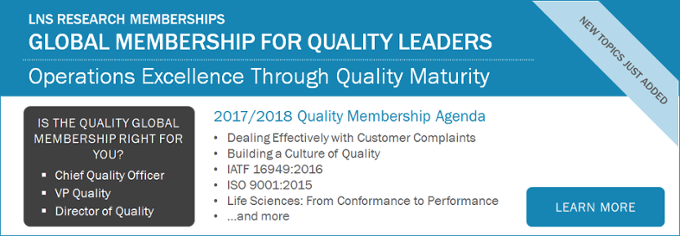Customer Complaint volume is an important metric for measuring customers’ experience and perceived product quality. In fact, it is one of the most widely tracked quality metrics in executive dashboards.
Customer complaints are a strong measure of how well a product meets the customer’s expectations of fit, finish, durability, and function. They are also a valuable input into corrective action, risk management, and requirements management processes.
Click here to speak with Dan Jacob
Customer complaints are one of the most widely requested benchmark data points. Very often, customer complaint initiatives focus on continuous improvement of existing products, as well as assigning customer complaint goals for new products. So, how should customer complaint targets be set? What is a competitive level of customer complaint volume in the market?
Capturing Customer Complaints
First, let’s investigate how customer complaints gather. Customer complaints are gathered in different methods depending upon a manufacturer’s role in the supply chain, industry, and sales and distribution network. Customer complaints may be communicated to a specific customer-facing engineer or associate through a field service team or a call center. Business systems capture and route complaints gathered in a call center or field service teams. Customer engineers and sales associates may receive complaints via email, phone, or in person. In some cases, there is a lack of business systems to capture these complaints effectively.
Customer Complaints have grown increasingly important with the advent of social media. Negative feedback that was once largely shielded from the public can now spread rapidly and reshape perceptions of brands. Organizations with strong consumer-facing brands as well as trade groups have adopted proactive strategies, such as social listening techniques to track trending issues that may impact brands and deploy reaction plans to mitigate any negative brand impact and/or promote positive brand impact.
The method used to gather customer complaints can dictate the total volume observed, which can create variation in the market.
Grading Customer Complaints
Regardless of how customer complaints are gathered, it is important to correctly grade complaints to facilitate the appropriate routing, reporting, or escalation. Many grading systems exist. Grading can include capturing severity, reported effect, at-fault party, and possibly initially-perceived failure mode. This grading may become split between multiple individuals as a complaint is routed. Response times are often closely linked to grading, and grading can trigger decisions such as Return Material Authorization and/or warranty reimbursement.
Grading may also have regulatory components. For instance, in life sciences, it is necessary to capture the decision to generate a report to a regulatory agency. The way in which an organization grades complaints can influence the number of complaints it reports.
Customer Complaint Benchmarking
The data shows that complaint volume varies substantially, although the medians vary by industry. In addition to the earlier discussion, benchmarking can be challenging because variation in manufacturer’s product volume, complexity, innovation rate, and industry can result in volumes of customer complaints. For instance, manufacturers of complex electromechanical medical devices would typically see more complaints than the manufacturer of bandages, even though both are medical device manufacturers.
Even so, manufacturers can derive value from comparison of internal complaint volumes to the data shown above, to determine relative standing in industry.
Customer Complaint Management Best Practices
LNS also benchmarks year over year improvement in customer complaint volume. This provides a better assessment of performance, as it eliminates the influence of company-to-company variation discussed above. Additionally, this YoY performance improvement has been correlated to specific best practices as well as groups of best practices to provide actionable recommendations to manufacturers. LNS will present these best practices and correlations in its upcoming Customer Complaint Handling virtual council event on July 20th, and lead a discussion on customer complaint reduction initiatives and practices with members. 